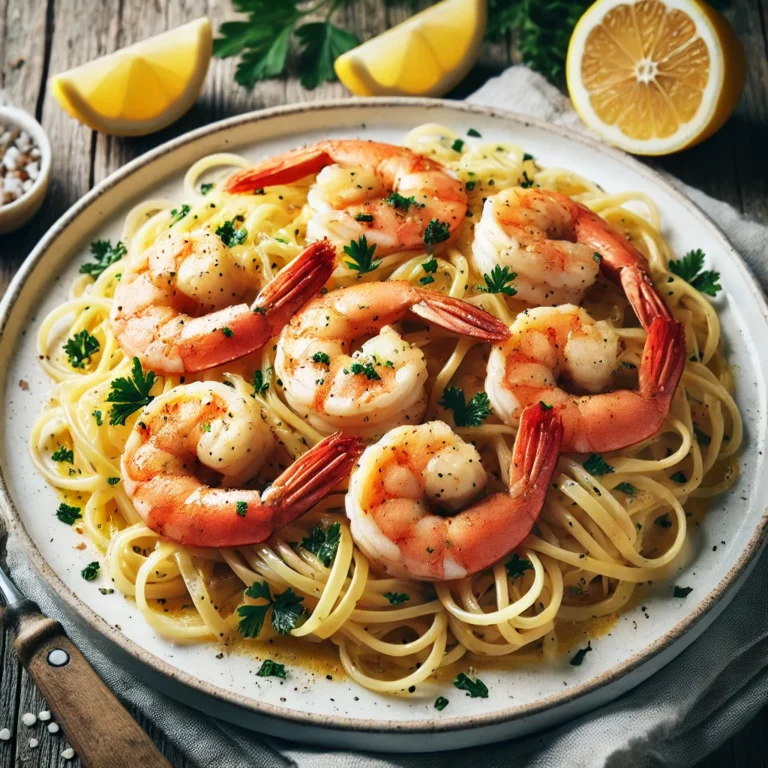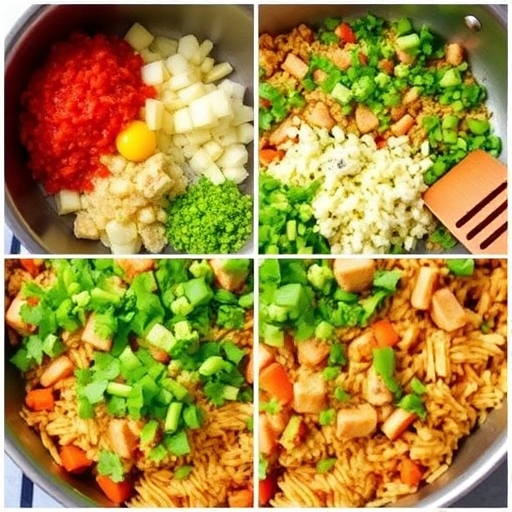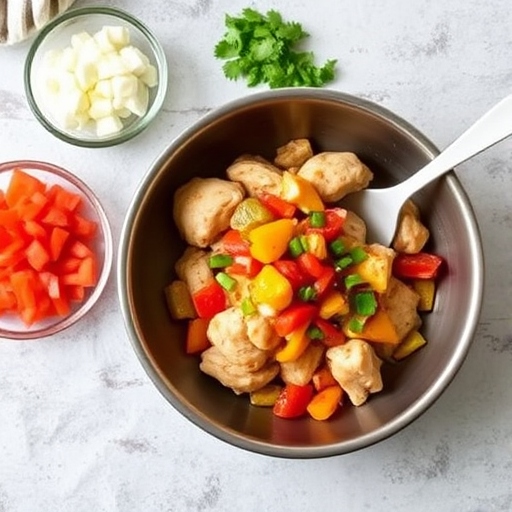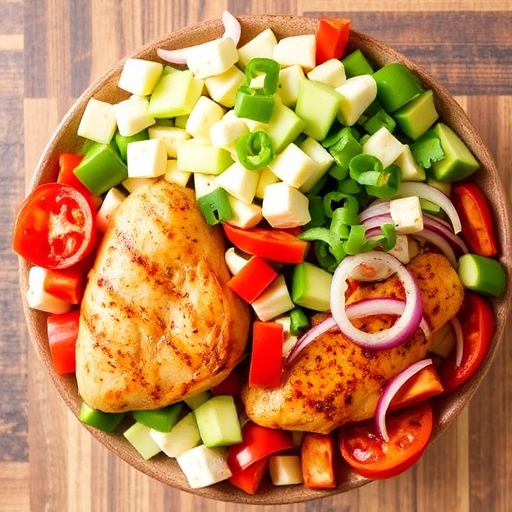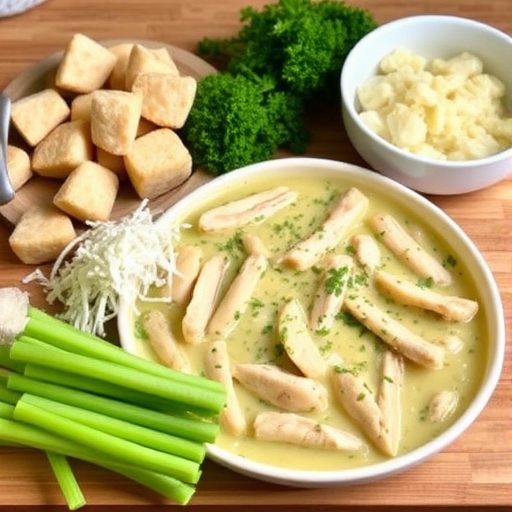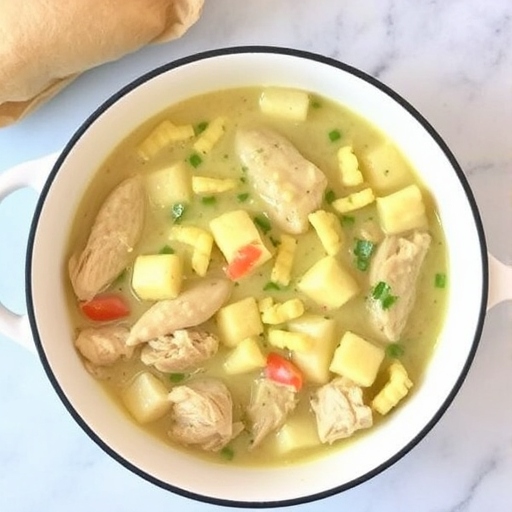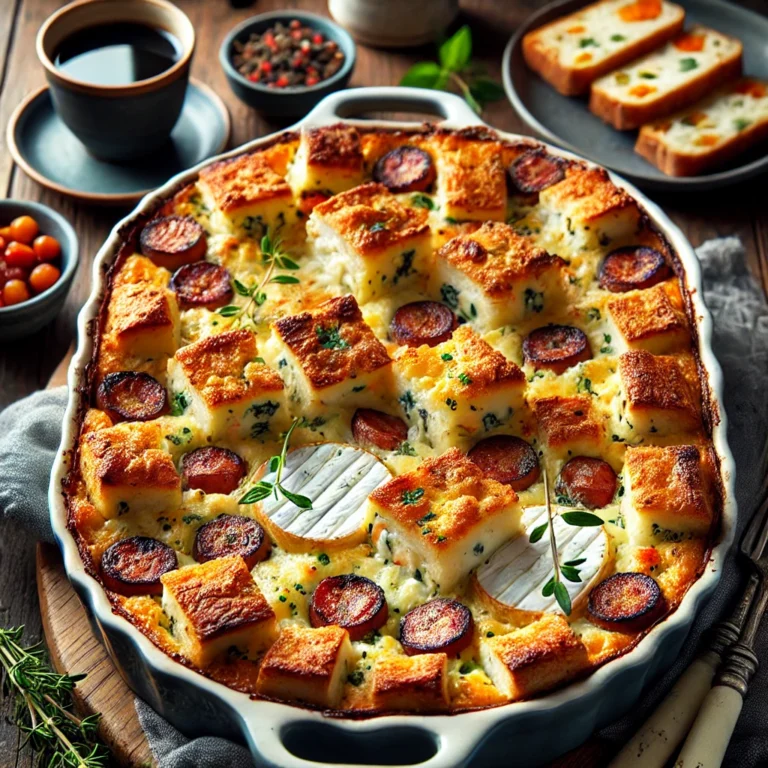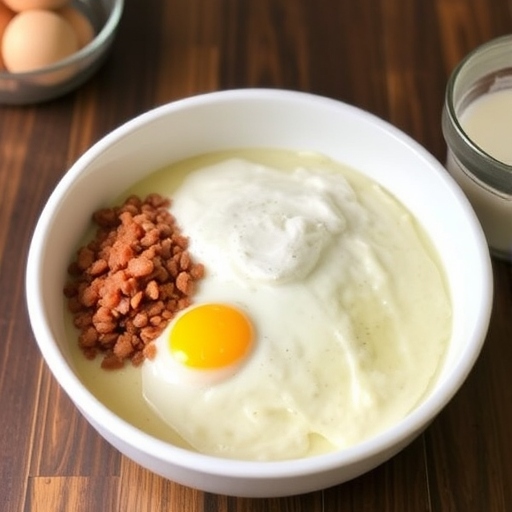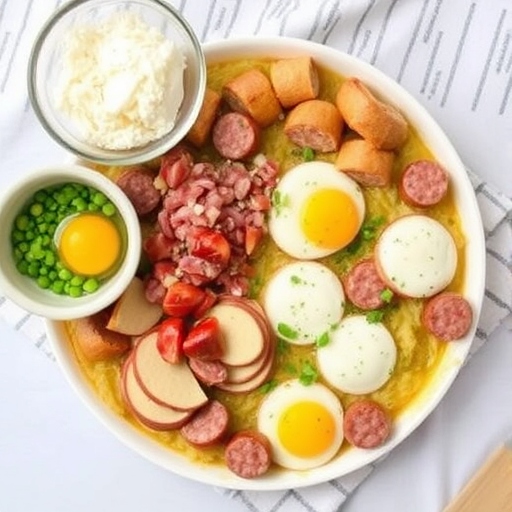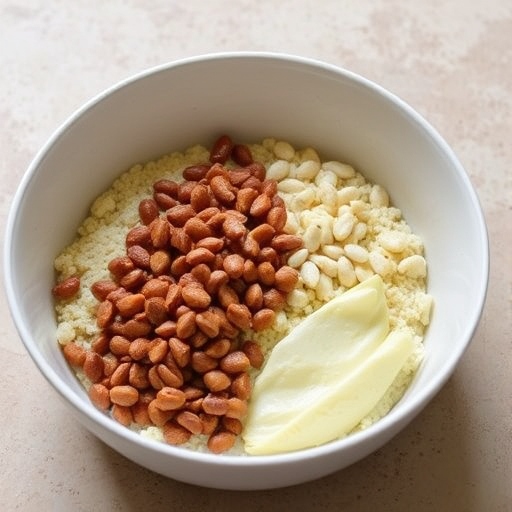Introduction
Shrimp Scampi is a luxurious yet simple dish that combines succulent shrimp, aromatic garlic, and a buttery, lemony sauce. Tossed with pasta or served with crusty bread, this Italian-American classic makes for an elegant dinner that’s ready in under 30 minutes.
Table of Contents
The Story Behind Shrimp Scampi
“Scampi” traditionally refers to a type of small lobster called langoustine. In Italian cuisine, this dish was originally made with scampi sautéed in olive oil, garlic, and white wine. When Italian immigrants brought the recipe to the U.S., they substituted shrimp for the harder-to-find langoustines, creating the shrimp scampi we know today.
The Benefits of Making Your Own Shrimp Scampi
- Freshness: Control the quality and freshness of ingredients, ensuring the best flavors.
- Quick and Easy: A restaurant-quality dish prepared in your own kitchen in under 30 minutes.
- Customizable: Adjust the spice, lemon, or garlic to suit your taste.
- Cost-Effective: Enjoy a gourmet meal without the hefty price tag of dining out.
Essential Ingredients for the Perfect Shrimp Scampi
- Shrimp: Large, deveined shrimp with tails on or off, depending on preference.
- Butter and Olive Oil: A rich base for the sauce, combining creaminess and a light Mediterranean touch.
- Garlic: Fresh, minced garlic adds bold flavor.
- White Wine: A dry white wine like Sauvignon Blanc enhances the sauce’s depth.
- Lemon Juice: Brightens the dish with tangy freshness.
- Parsley: Fresh parsley for garnish and color.
- Red Pepper Flakes: Optional for a subtle kick.
- Pasta (optional): Spaghetti or linguine to soak up the sauce.
Cultural History of Ingredients
- Shrimp: Shrimp has been a staple in coastal cuisines for centuries, celebrated for its versatility and delicate flavor.
- Garlic: A cornerstone of Italian and Mediterranean cuisine, garlic adds aromatic depth.
- Wine: Cooking with wine has been a hallmark of European cooking since antiquity.
- Lemon: This citrus fruit, originating from Asia, is a key ingredient in Mediterranean dishes.
Equipment You’ll Need
- Large Skillet: For sautéing shrimp and preparing the sauce.
- Pot: To cook pasta if serving it with the dish.
- Tongs: For tossing shrimp and pasta together.
- Microplane: To zest lemon for added aroma.
Step-by-Step Instructions for Shrimp Scampi
- Prepare the Shrimp:
- Peel and devein the shrimp, leaving tails on if preferred. Pat them dry with paper towels.
- Cook Pasta (if using):
- Boil pasta in salted water until al dente. Reserve ½ cup of pasta water and drain.
- Sauté Shrimp:
- Heat olive oil and butter in a large skillet over medium heat. Add shrimp in a single layer and cook for 2-3 minutes per side until pink. Remove shrimp and set aside.
- Make the Sauce:
- In the same skillet, add more butter if needed. Sauté minced garlic until fragrant.
- Deglaze the pan with white wine, scraping up any browned bits. Simmer until the wine reduces by half.
- Add lemon juice and a pinch of red pepper flakes.
- Combine Ingredients:
- Return shrimp to the skillet. Toss to coat them in the sauce. If using pasta, add it now along with reserved pasta water.
- Garnish and Serve:
- Sprinkle with freshly chopped parsley and a dash of lemon zest. Serve immediately with bread or pasta.
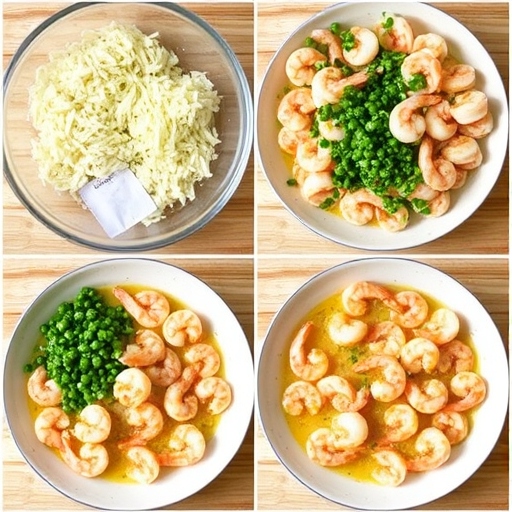
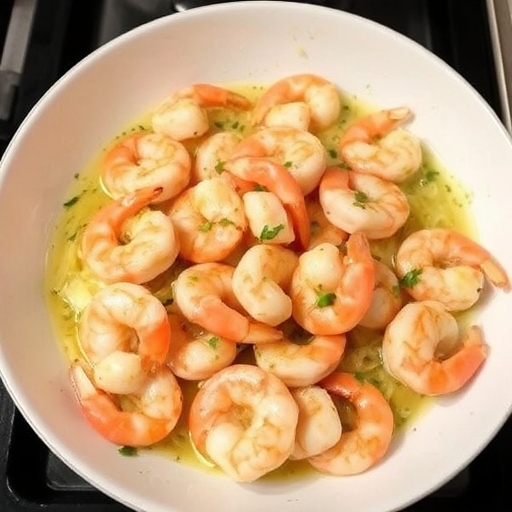
Suggestions for Serving and Storing
- Serving Suggestions:
- Serve with a side of roasted asparagus or a simple Caesar salad.
- Pair with garlic bread to soak up every drop of the sauce.
- Storing:
- Refrigerate leftovers in an airtight container for up to 2 days. Reheat gently to avoid overcooking the shrimp.
Chef Simon’s Tips for Shrimp Scampi
- Shrimp Selection: Use fresh or frozen shrimp but ensure they’re completely thawed before cooking.
- Don’t Overcook: Shrimp cook quickly; overcooking can make them rubbery.
- Wine Substitute: If avoiding alcohol, use chicken broth or a splash of white grape juice.
Emotional and Psychological Impact of Food
The bright, zesty flavor of shrimp scampi uplifts the mood and creates a sense of indulgence. It’s a perfect dish for celebrating small victories or simply elevating an ordinary evening into something special.
Mindful Cooking Techniques
- Savor the Aromas: Take a moment to enjoy the garlic sizzling in butter and the fragrant steam from the lemony sauce.
- Be Present: Cooking shrimp scampi requires focus, ensuring you don’t overcook the delicate shrimp.
Tips for Keeping the Recipe Fresh Longer
- Refrigerate Promptly: Store leftovers in an airtight container immediately after cooling.
- Use Fresh Ingredients: Fresh lemon juice and parsley make a big difference in flavor.
- Reheat with Care: Add a splash of water or broth when reheating to revive the sauce.
Advanced Culinary Terms and Techniques
- Deglazing: Adding liquid (like wine) to a hot pan to loosen and dissolve flavorful bits stuck to the bottom.
- Emulsify: Combining butter and wine to create a creamy, cohesive sauce.
Healthy Ingredient Alternatives
- Butter Alternatives: Use ghee or a plant-based butter substitute.
- Low-Carb Option: Serve over zoodles (zucchini noodles) or cauliflower rice.
- Reduced Sodium: Use low-sodium broth or wine and skip added salt.
More Serving Ideas
- Over Grains: Serve shrimp scampi on a bed of quinoa or couscous.
- As an Appetizer: Pair shrimp scampi with crostini for a crowd-pleasing starter.
- In a Wrap: Use leftover shrimp scampi in a tortilla wrap with fresh greens.
Common Issues and Solutions
- Sauce Too Thin: Simmer longer to reduce and thicken.
- Bland Flavor: Add more lemon juice, garlic, or salt to boost taste.
- Overcooked Shrimp: Remove them from the pan as soon as they turn pink.
Variations to Try
- Creamy Scampi: Add a splash of heavy cream to the sauce for a richer texture.
- Spicy Scampi: Increase the red pepper flakes for more heat.
- Vegetarian Scampi: Substitute shrimp with mushrooms or artichoke hearts.
Nutritional Information and Health Benefits
Per Serving (without pasta):
- Calories: 290
- Protein: 24g
- Fat: 18g
- Carbohydrates: 4g
- Fiber: 0g
Health Benefits:
- Shrimp are high in protein and low in calories, making them a healthy protein source.
- Garlic and olive oil contribute heart-healthy antioxidants.
- Lemon juice is rich in vitamin C, boosting the immune system.
The Art of Pairing Shrimp Scampi
- Wine: Serve with a crisp Pinot Grigio or Sauvignon Blanc.
- Cocktail: A light gin and tonic complements the lemony flavors.
- Non-Alcoholic: Sparkling water with a slice of lemon refreshes the palate.
Frequently Asked Questions (with answers)
Q: Can I use frozen shrimp?
A: Yes, just make sure to thaw them completely and pat them dry before cooking.
Q: What type of pasta pairs best?
A: Linguine or spaghetti works wonderfully, but angel hair is also a great option.
Q: How do I make it kid-friendly?
A: Reduce or omit the red pepper flakes and use chicken broth instead of wine.
Conclusion
Shrimp scampi is a versatile and flavorful dish that delivers gourmet quality with minimal effort. Whether you’re preparing a romantic dinner or a family meal, this recipe guarantees satisfaction. With its vibrant flavors and endless serving possibilities, shrimp scampi is sure to become a favorite in your culinary repertoire.
Thank you for visiting SqueezyRecipes! We’re dedicated to making cooking enjoyable and accessible for everyone, regardless of your skill level. Chef Simon is always ready to share the best recipes that bring a creative touch to your daily meals. With each visit, you’ll discover new recipes and innovative ideas that cater to every occasion. Don’t miss out on exploring SqueezyRecipes for the latest delicious dishes, and feel free to leave your feedback and share your experiences with the recipes you’ve tried. Cooking together makes everything better!

